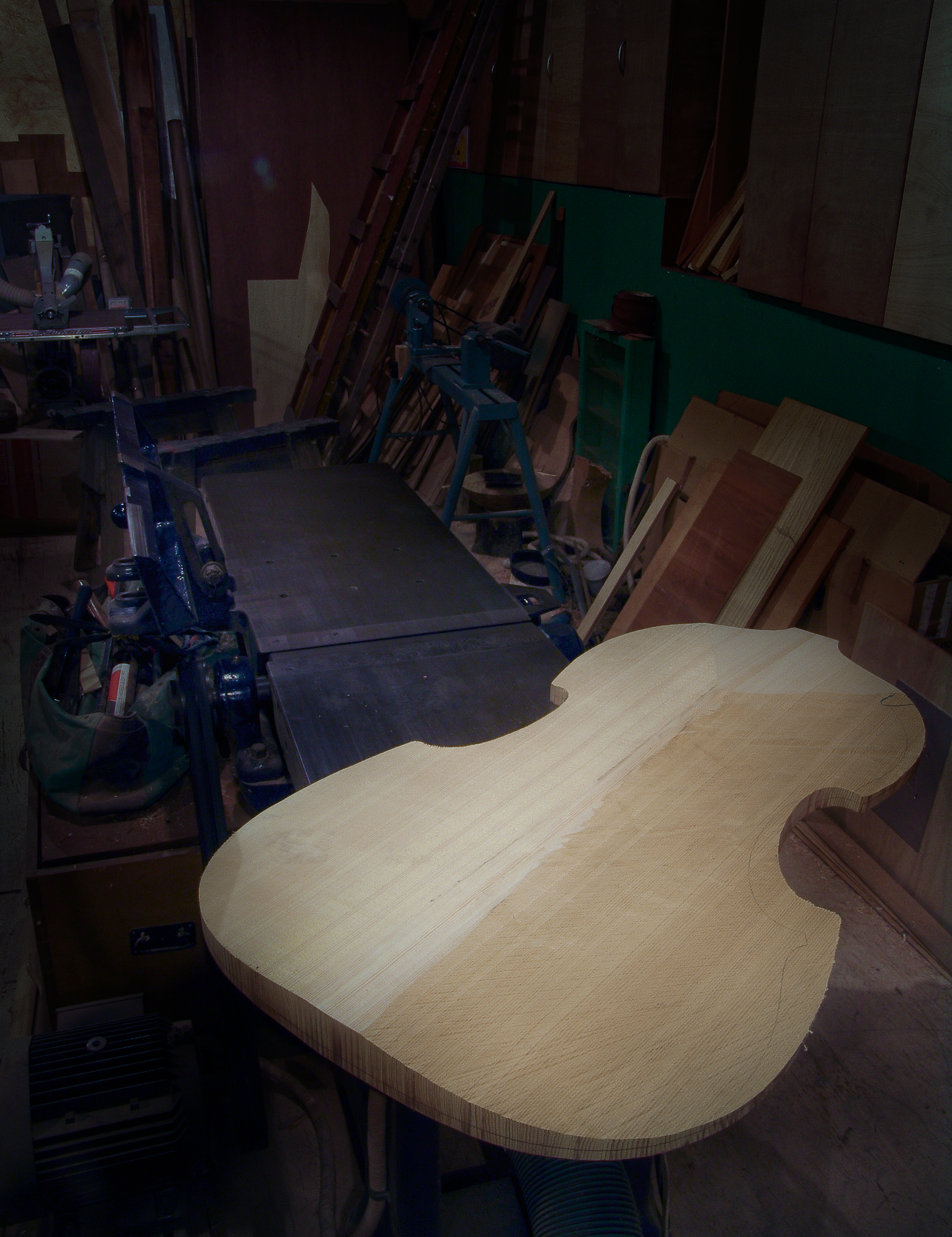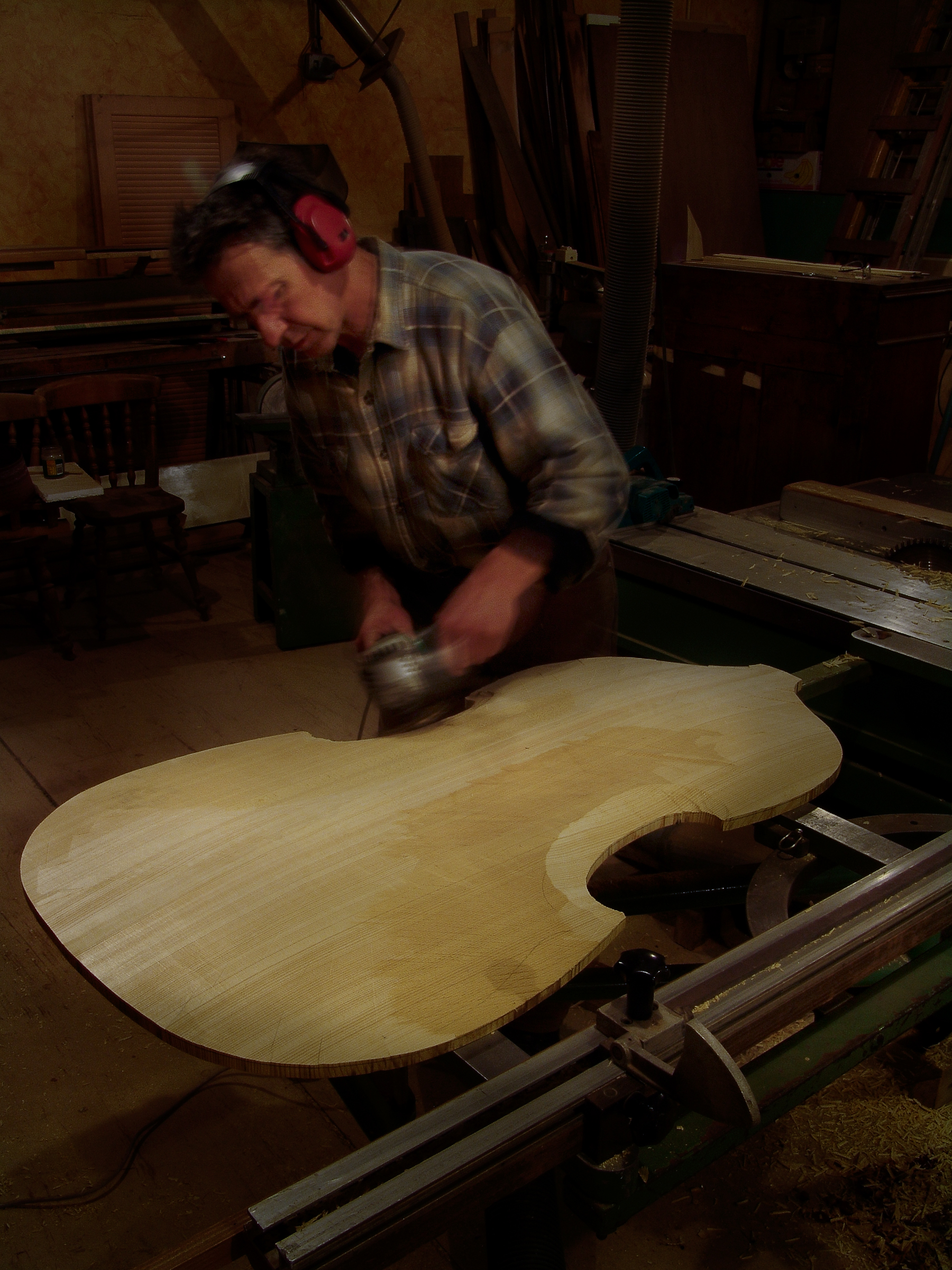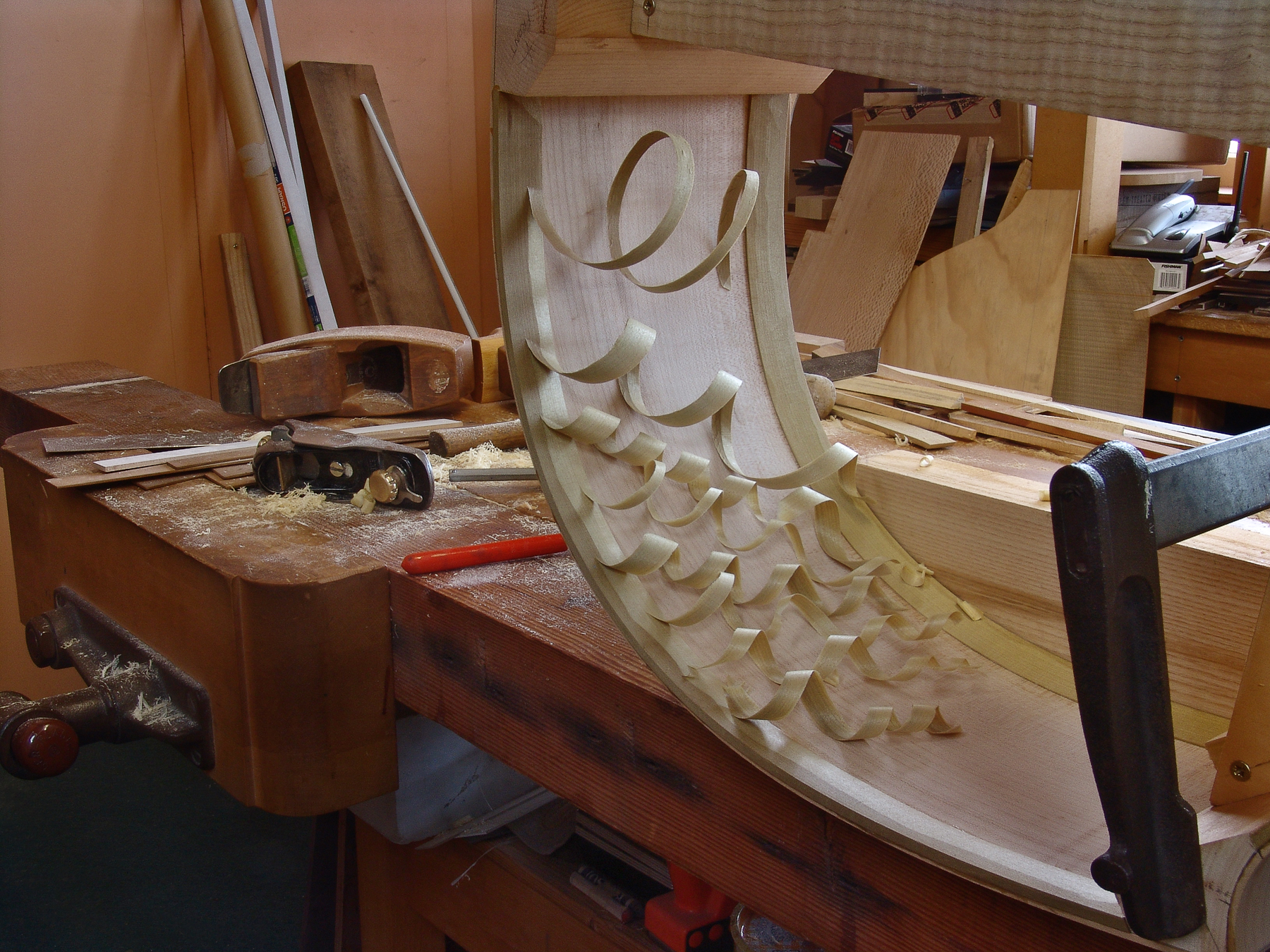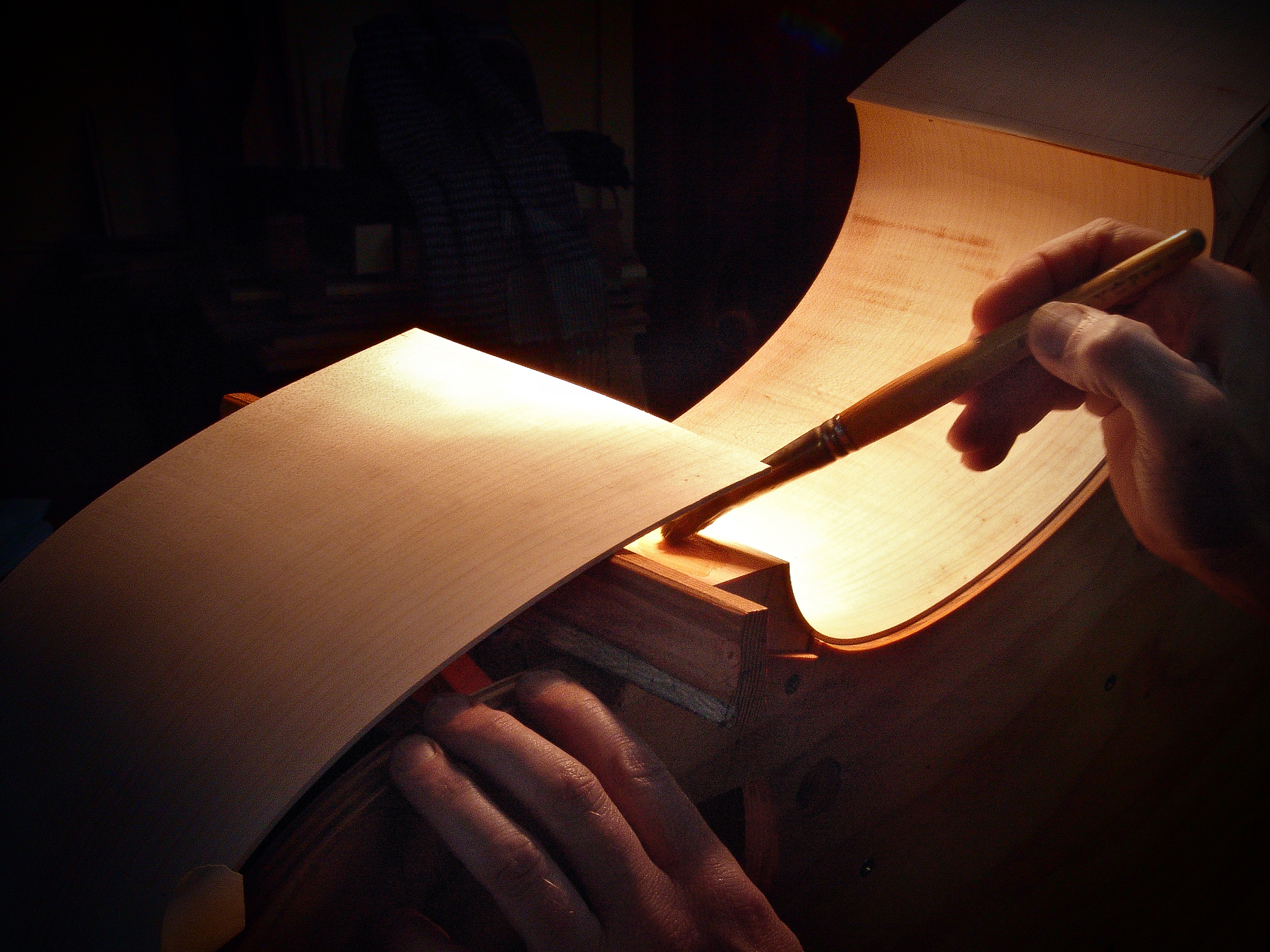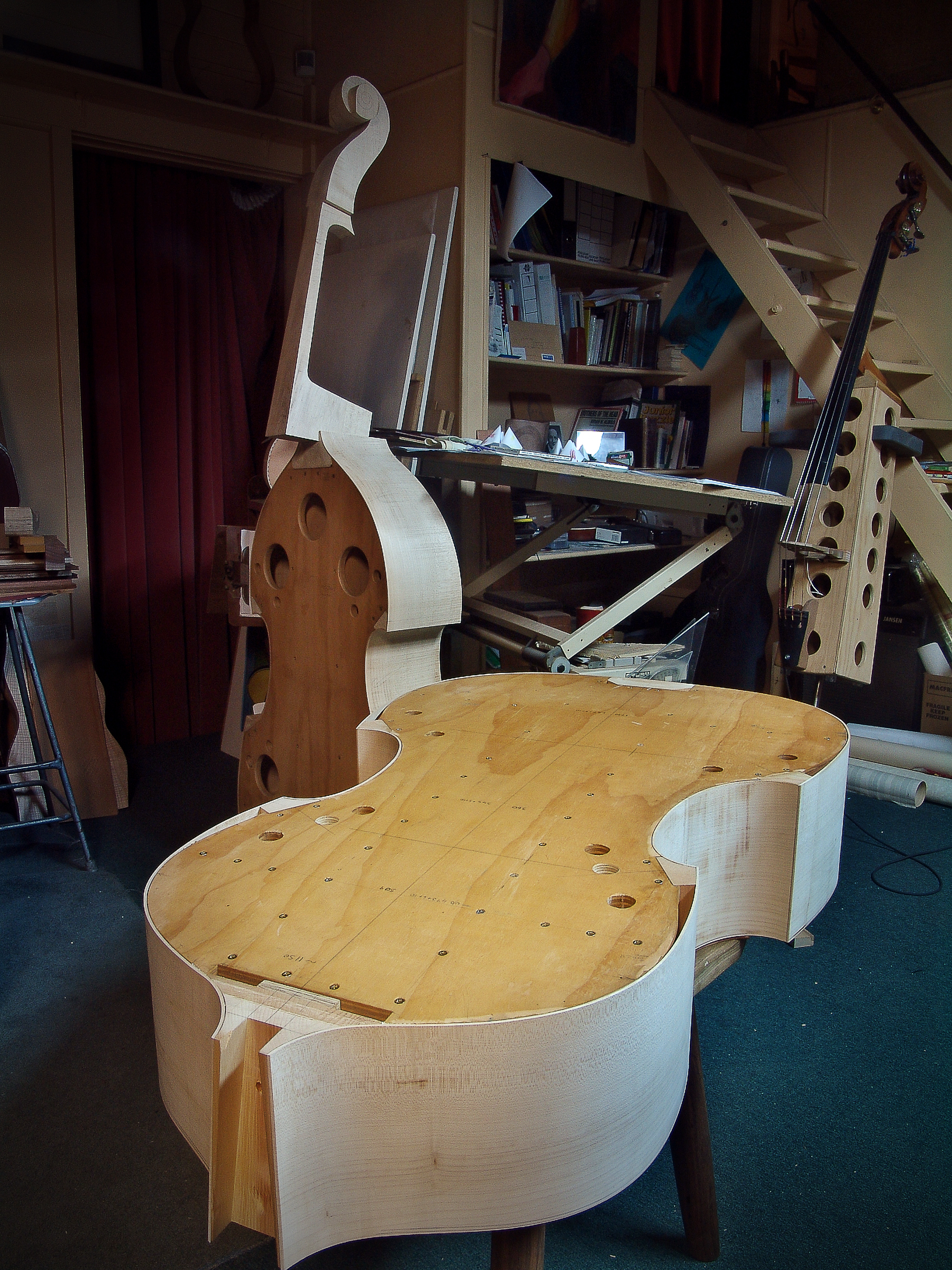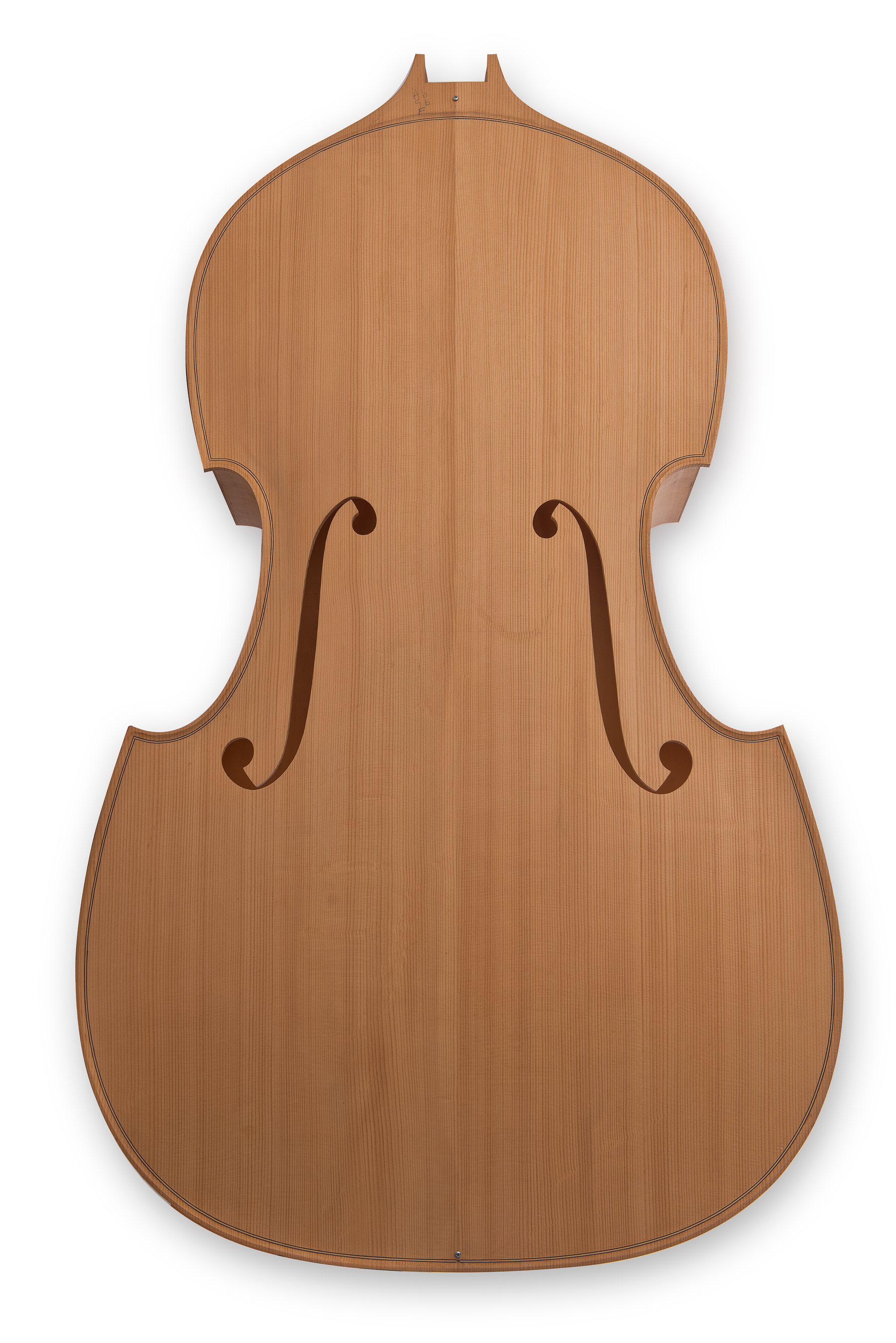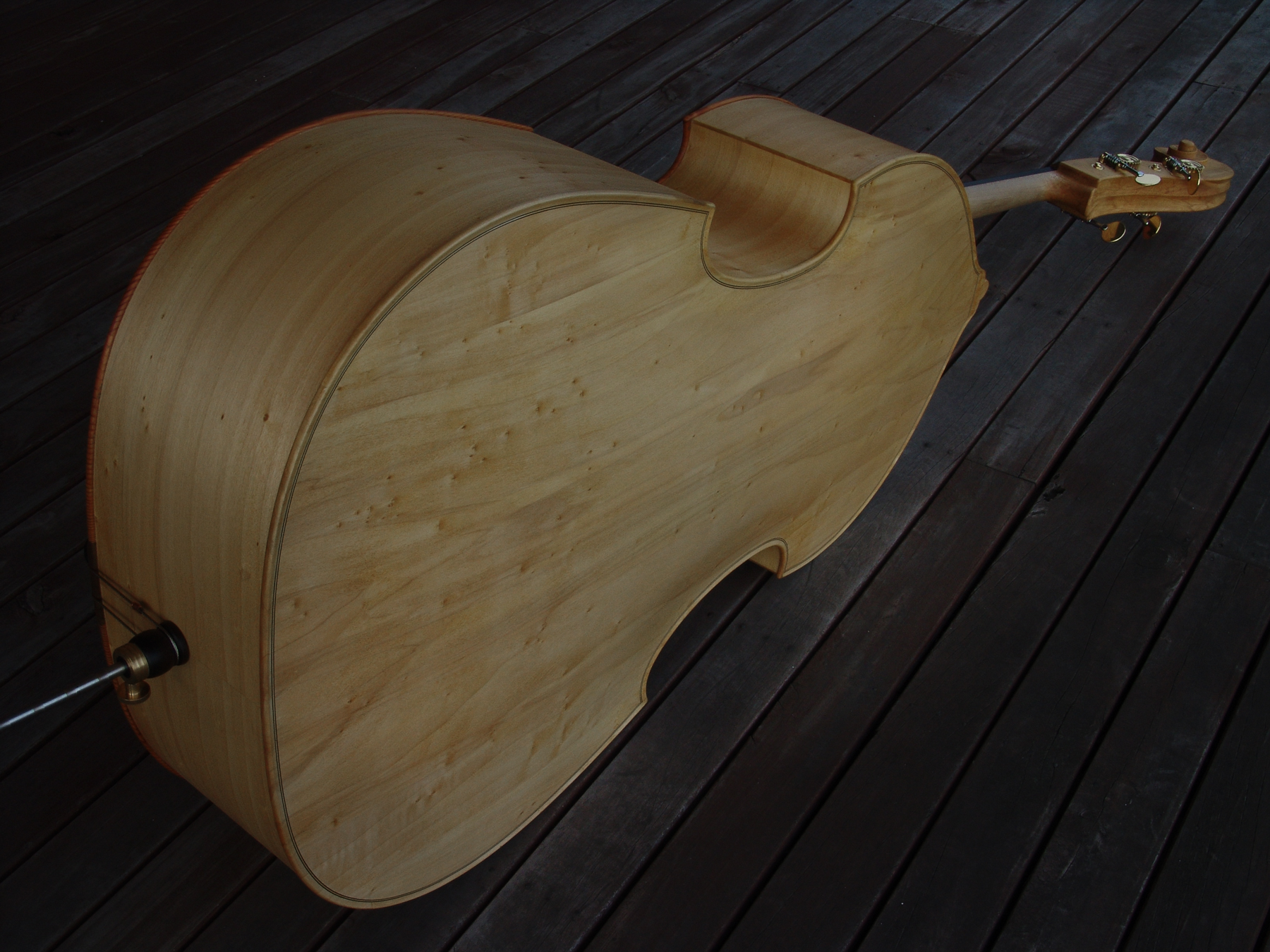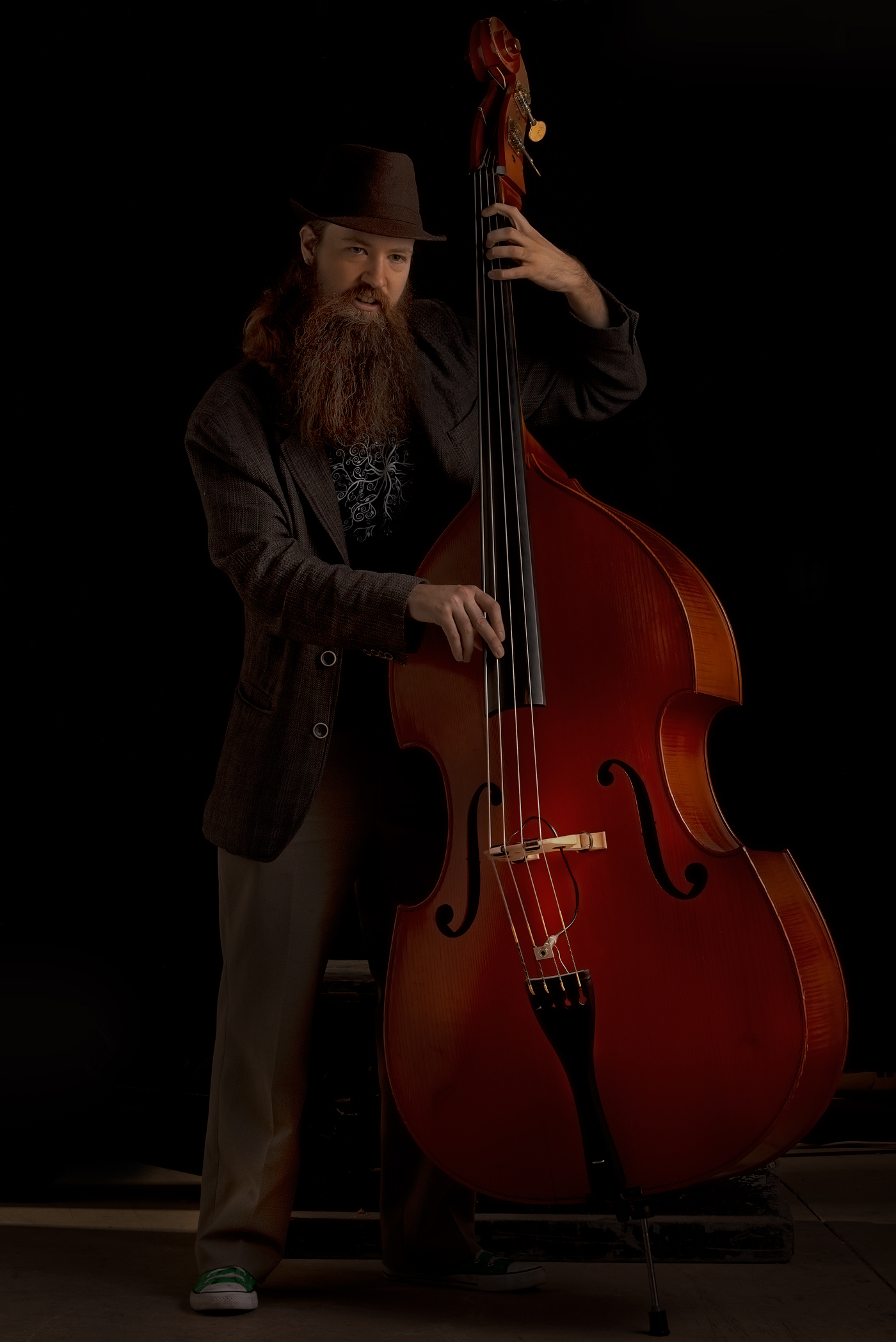
Selecting the timber is a critical step, here I am laying out the instruments fundamental design.
I craft two styles of double bass, the Maggini and Viol, the basic difference is the Viol form has sloping shoulders. Either style can be made with a flat or carved back, I usely use Spruce for the sound board. Having said that, the bass I presently play has a sound board constructed from short thin blocks of laminated Baltic pine. If you really want to know, I found an abandoned packing crate, I was impressed by the remarkable quality of the timber. Long story short, I took the packing crate back to the workshop, selected some of the timer and laminated it, eventually carving it into an Arch-top for my double bass.
I think there is a certain amount of morphing between an instrument and the player. This particular double bass largely due to the sound board has a unique sound that works well with Jazz, perhaps the qualities of the instrument and its personality has effected my style, tastes and judgment. What I find interesting is the the possibilities are not limited to convention when it comes to an instruments construction and in particularly the sound board.
In the building of instruments there is a trend to use modern materials, some I feel are just wrong but others have produced splendid results. Personally I build instruments in the conventional way, using hand tools and where necessary I use modern machinery, I don't use CNG routers or computers to decide the outcome, the question I often get is why?
I feel the instrument's I make are based on the combination of many materials and the slight differences that a hand made instrument offers over a computerised instrument is the sum of the instruments personality and this comes about due to the anomalies that you get from a hand made instrument. Making and treating every component the same removes the potential and personality of an instrument. Homogenized sound is of no interest to me.
Many musicians I talk with want something unique, and as I found with my laminated Baltic Pine double bass, I like the difference this instrument offers. Something about creating my own sound. The instrument if it has a great personality will have a big say in what that sound is.
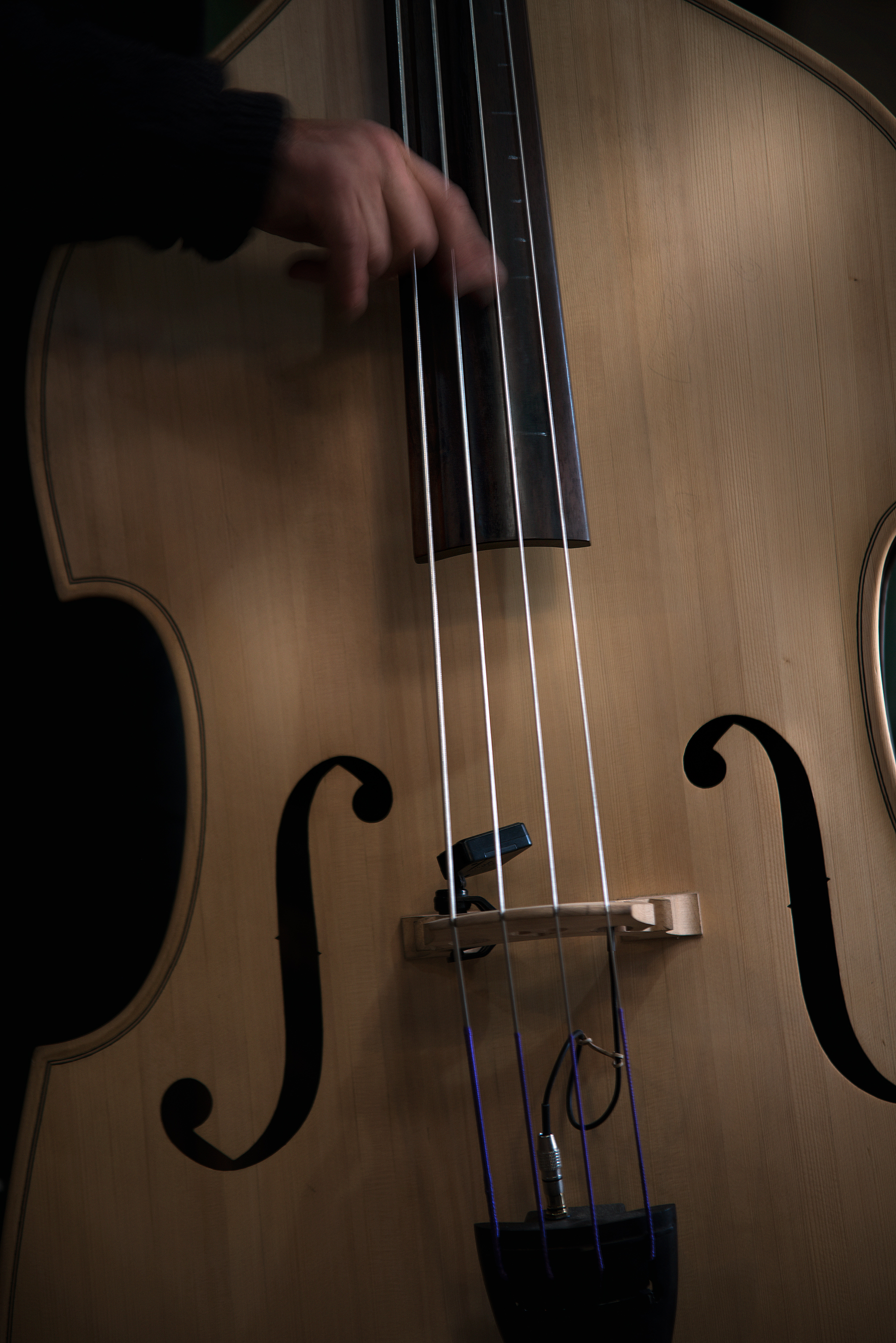
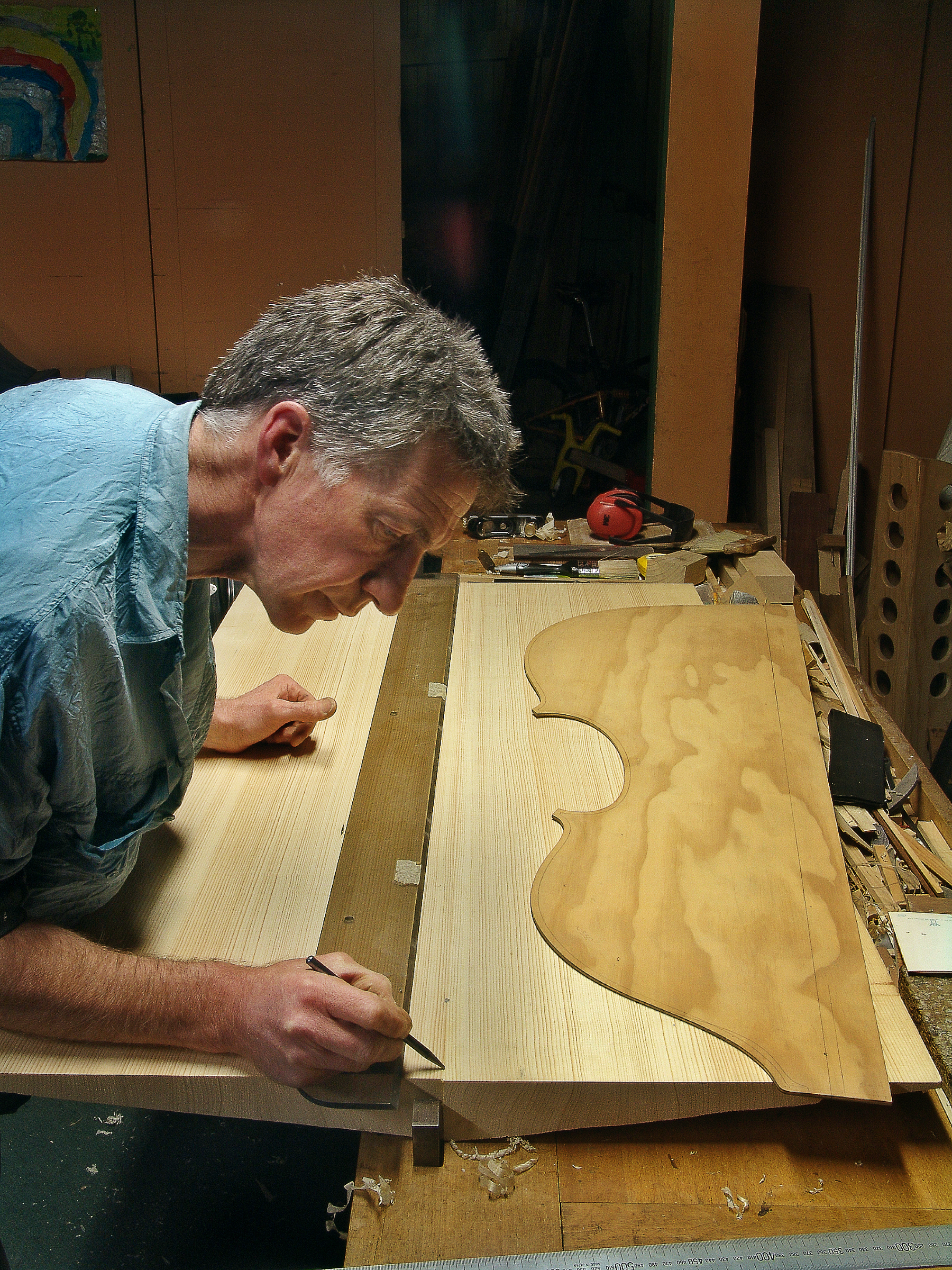
Featuring : Hand carved solid Spruce sound board. Spruce is considered one of the finest tone woods and is most suited for sound boards. Back and sides Maple.
Finishes : Nitrocellulose lacquer / Wood oils / Shellac
Detailing : Ebony fretboard.
Hardware : Rubner tuners
Nut : Hand carved ebony.
| Item | Description |
|---|---|
| Neck Scale | 41.3 – 43.3 inches (105 – 110 cm) |
| Frets | Fretless |
| Pick up | Optional - Poetize, coil magnet, condenser, microphone ... |
The question of price varies depending on the setup and detailing of the instrument, to discuss having an instrument made for you it is best to contact Peter at his Studio. PH : 64-3 328 8033

